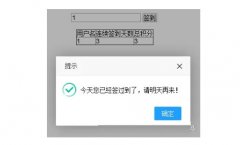在PHP程序中运行Python脚本(接收数据及传参)的方法详解
时间:2023-12-12下面我将为您详细介绍如何在PHP程序中运行Python脚本,并进行数据传递。
准备工作
在进行下一步操作之前,我们需要确保已经安装好以下环境:
- PHP 5.4或以上版本
- Python 2.7或以上版本
- Apache或NGINX等web服务器
步骤一:编写PHP脚本
首先,我们需要在PHP程序中编写相关代码,用于调用Python脚本并向其传递参数以及接收Python脚本的返回值。下面是一个简单的例子:
<?php
// 定义Python脚本的路径
$pythonScript = "/path/to/python/script.py";
// 要传递的参数
$arg1 = "hello";
$arg2 = "world";
// 调用Python脚本
$command = "python " . $pythonScript . " " . $arg1 . " " . $arg2;
$output = shell_exec($command);
// 输出Python脚本的返回值
echo $output;
?>
在上面的代码中,我们首先定义了Python脚本的路径。然后,我们定义了要传递的参数,并使用“shell_exec()”函数调用Python脚本。最后,我们输出Python脚本的返回值。请注意,本例中我们仅传递了两个简单的字符串参数,实际上您可以根据您的需求传递任何类型的数据。
步骤二:编写Python脚本
接下来,我们需要编写一个Python脚本,用于接收PHP程序传递的参数,并执行相关功能。下面是一个简单的示例:
import sys
# 接收参数
arg1 = sys.argv[1]
arg2 = sys.argv[2]
# 输出参数
print "Argument 1: " + arg1
print "Argument 2: " + arg2
# 执行相关功能
# ...
# 返回结果
print "Result: " + str(result)
在上面的代码中,我们使用“sys.argv”函数接收PHP程序传递的参数,并使用“print”函数输出参数。然后,我们执行相关功能,并使用“print”函数返回结果。请留意,本例中我们只是简单地打印了传入的参数,并返回了一个结果,实际上您应该在Python脚本中完成您的实际逻辑功能。
示例
为了更好地展示如何在PHP程序中运行Python脚本并传递参数,下面我们来看一个更为具体的示例。假设我们要开发一个程序,用于生成验证码,并将验证码返回给用户。我们可以使用Python的“Pillow”库来生成验证码图像。下面是PHP程序的代码:
<?php
// 定义Python脚本的路径
$pythonScript = "/path/to/captcha/generator.py";
// 设定参数并调用Python脚本
$command = "python " . $pythonScript;
$output = shell_exec($command);
// 将输出的图像返回到浏览器
header('Content-Type: image/png');
echo base64_decode($output);
?>
然后,我们来看一下Python脚本的代码:
from PIL import Image, ImageDraw, ImageFont
import random
import sys
import base64
# 图片大小
size = (120, 30)
# 验证码长度
length = 5
# 字体文件
fontPath = "/path/to/fonts/Arial.ttf"
# 随机字符串
def randomStr():
return ''.join([random.choice('abcdefghijklmnopqrstuvwxyzABCDEFGHIJKLMNOPQRSTUVWXYZ0123456789') for i in range(length)])
# 生成验证码
def generateCaptcha():
# 创建图像
img = Image.new('RGB', size, (255, 255, 255))
draw = ImageDraw.Draw(img)
# 字体
font = ImageFont.truetype(fontPath, 20)
# 随机字符串
captchaStr = randomStr()
# 将字符串写入图像
for i, c in enumerate(captchaStr):
x = 20 + i * 20
y = random.randint(5, 10)
draw.text((x, y), c, font=font, fill=(0, 0, 0))
# 输出图像
imgByteArr = io.BytesIO()
img.save(imgByteArr, format='PNG')
imgByteArr = imgByteArr.getvalue()
return base64.b64encode(imgByteArr)
# 调用函数
print generateCaptcha()
在上面的代码中,我们使用Python的“Pillow”库生成验证码图像。我们首先定义了图像大小、验证码长度和字体文件,然后使用“generateCaptcha()”函数生成验证码图像。最后,我们使用“base64”库将图像编码为base64格式,并将其打印出来。
请注意,在使用这个示例时,您需要根据自己的环境进行修改,并确保已经正确安装了“Pillow”库。
以上就是在PHP程序中运行Python脚本并进行数据传递的方法详解,希望对您有所帮助。
 PHP+ajax+mysql+layui实现每日签到及提醒功能这篇文章主要为大家详细介绍了使用 PHP + layui 实现每日 签到 及提醒功能,具有一定的参考价值,感兴趣的小伙伴们可以参考一下,首次签到获得1个积分,第二次签到获得2个积
PHP+ajax+mysql+layui实现每日签到及提醒功能这篇文章主要为大家详细介绍了使用 PHP + layui 实现每日 签到 及提醒功能,具有一定的参考价值,感兴趣的小伙伴们可以参考一下,首次签到获得1个积分,第二次签到获得2个积